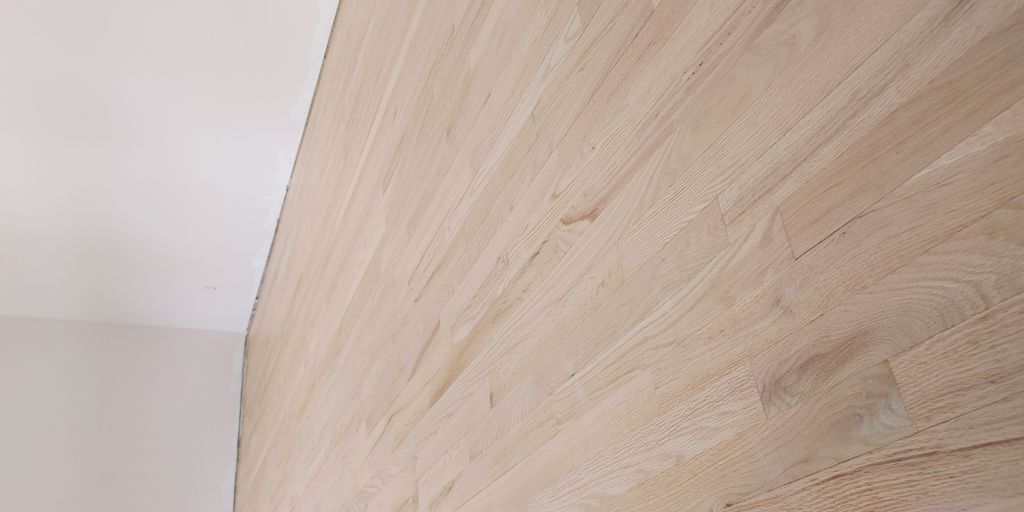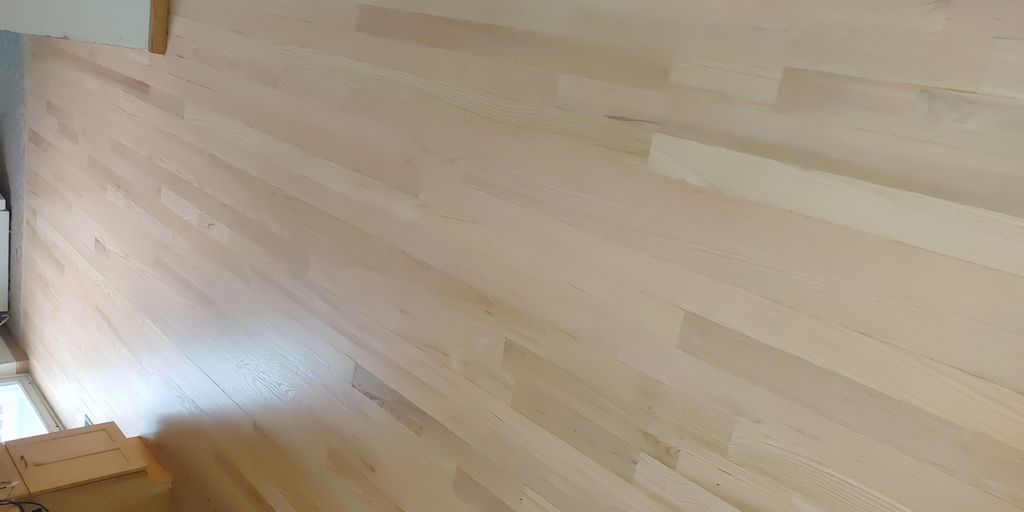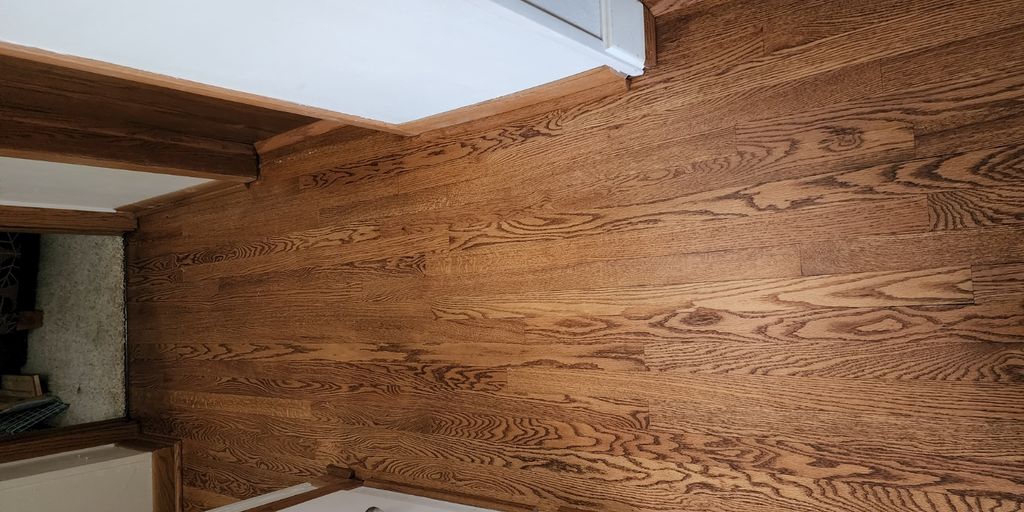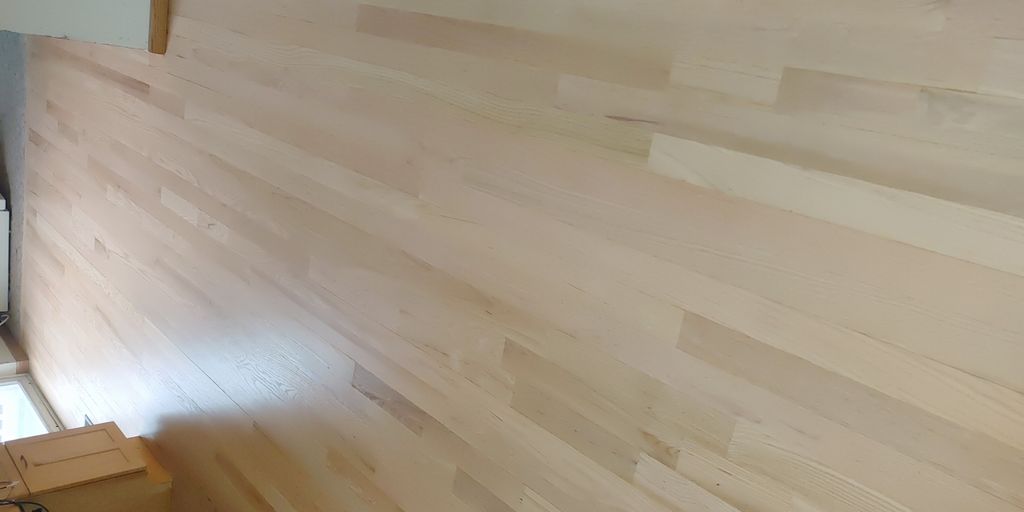Exploring Local Hardwood Shops: What to Expect
Types of Hardwood Available
When you step into a local hardwood shop, the variety of wood types might surprise you. From classic options like oak and maple to more exotic choices like Brazilian cherry and tigerwood, each type offers unique characteristics. Oak is a favorite for its durability and timeless appeal, while maple provides a lighter, more modern look. If you’re after something a bit more unique, exotic woods can add a touch of elegance and sophistication to your home.
Thank you for reading this post, don't forget to subscribe!Benefits of Shopping Locally
Shopping at local hardwood stores offers several advantages. First, you’re supporting small businesses in your community, which is always a win. Local shops often provide personalized service, helping you choose the right wood for your project. They also have a better understanding of the regional climate, offering advice on which woods will perform best in your area. Plus, you can see and feel the wood before you buy, ensuring it’s exactly what you want.
Comparing Prices and Quality
When it comes to purchasing hardwood, price and quality are key considerations. Local shops often offer competitive pricing, but it’s wise to compare a few options before making a decision. Consider what’s included in the price—such as delivery or installation services—and whether there are any warranties. Sometimes paying a bit more upfront can save you money in the long run with better quality materials and services. Remember, the cheapest option isn’t always the best when it comes to something as enduring as hardwood flooring.
Top Hardwood Shops Near Me: A Comprehensive List
Local Favorites and Hidden Gems
Finding the best hardwood shop isn’t always about who has the biggest sign or the flashiest showroom. Some of the best places are those tucked away in your neighborhood, the ones you might not notice at first. These shops often offer a unique selection of hardwoods that you won’t find in big-box stores. Take a stroll around your area and see what local businesses have to offer. You might stumble upon a hidden gem that has just the right type of wood for your next project.
Customer Reviews and Ratings
Before making a purchase, it’s a good idea to check out what other customers are saying. Reviews can provide insight into the quality of the wood and the level of service you can expect. Look for shops with consistent positive feedback. If a store has a few negative reviews, see how they respond to them—this can tell you a lot about their customer service. Remember, a shop that values its customers will always strive to make things right.
Special Offers and Discounts
Who doesn’t love a good deal? Many local hardwood shops offer special promotions or discounts throughout the year. It’s worth asking about any current offers when you visit. Some stores might have seasonal sales or offer discounts for bulk purchases. Keep an eye out for these opportunities to save a bit of cash while still getting top-quality wood. You can also sign up for newsletters or follow them on social media to stay updated on the latest deals.
Understanding Hardwood Varieties for Your Home
Popular Hardwood Species
When it comes to choosing hardwood for your home, the options can seem endless. Oak, maple, and cherry are among the most popular choices. Oak is known for its durability and classic look, making it a favorite for many homeowners. Maple offers a lighter, more contemporary appearance, while cherry provides a rich, warm tone that can add elegance to any room. Each of these species has its own unique grain pattern and color, allowing you to pick one that best fits your style.
Exotic Hardwood Options
If you’re looking to make a statement, exotic hardwoods like Brazilian cherry or teak might be the way to go. These woods are not only visually striking with their vibrant colors and distinctive grain patterns, but they also offer exceptional durability. However, keep in mind that exotic woods can be more expensive and may require special care during installation. For those who want something unique, these exotic options can truly set your home apart.
Eco-Friendly Choices
In today’s world, many homeowners are considering the environmental impact of their flooring choices. Bamboo and cork are excellent eco-friendly options. Bamboo is technically a grass, not a wood, but it offers a similar look and feel. It’s fast-growing, making it a renewable resource. Cork, harvested from the bark of cork oak trees, provides a soft underfoot feel and excellent insulation. Both options are sustainable and can contribute to a greener home environment.
Choosing the right hardwood for your home is about balancing aesthetics, durability, and sustainability. Whether you opt for a classic species, an exotic standout, or an eco-friendly alternative, each choice brings its own benefits to your living space.
How to Choose the Right Hardwood for Your Needs

Assessing Durability and Style
When picking hardwood for your home, durability is a big deal. You want something that can handle foot traffic, pets, and maybe even the occasional dropped vase. Some woods, like oak and maple, are known for their toughness. They’re popular because they can take a beating and still look fab. But don’t just think about strength; style matters too. The color and grain of the wood should fit your home’s vibe. Is your decor modern, traditional, or a bit of both? Make sure your choice reflects that.
Matching Hardwood to Home Decor
Matching your hardwood to your home decor is like picking the right tie for a suit. It’s got to complement the existing elements. If your room is full of dark, rich furniture, a lighter wood might create a nice contrast. Or, if you’ve got a lot of natural light, a darker wood can add warmth. Consider the finish as well—glossy, matte, or somewhere in between. Each finish gives off a different feel and can totally change the room’s ambiance.
Considering Maintenance Requirements
Let’s be real, some hardwoods need more TLC than others. If you’ve got a busy household, you might not want to spend all your free time on floor care. Hardwoods like cherry and walnut look stunning but can show scratches more easily. On the flip side, oak and hickory are more forgiving. Think about how much maintenance you’re willing to do. Regular sweeping and mopping are a must, but some woods will require more frequent polishing or refinishing.
Hardwood floors are a long-term investment, blending beauty with practicality. With the right choice, they can enhance your living space for years to come.
The Benefits of Buying from Local Hardwood Suppliers
Supporting Local Businesses
Choosing to buy from local hardwood suppliers means you’re putting money back into your community. This not only helps sustain local jobs but also promotes economic growth in your area. When you opt for local suppliers, you’re supporting your neighbors and contributing to a vibrant local economy.
Personalized Customer Service
Local suppliers often provide a level of personalized service that larger chains simply can’t match. They know their products inside and out and can offer tailored advice to suit your specific needs. This can be incredibly beneficial, especially if you’re unsure about what type of hardwood is best for your home.
Access to Unique Products
Local hardwood suppliers often have access to unique and rare wood species that you might not find elsewhere. This gives you the opportunity to select distinctive materials that can set your home apart. Whether you’re looking for something classic or a bit more exotic, local suppliers can offer a range of options that reflect your personal style.
By choosing local, you not only get quality materials but also contribute to a sustainable future by reducing transportation emissions. Plus, you get to enjoy the satisfaction of knowing exactly where your wood comes from.
Tips for Evaluating Hardwood Quality
Inspecting Wood Grain and Texture
When you’re checking out hardwood, take a close look at the grain and texture. A consistent and smooth grain is a sign of quality. Look for uniform patterns that catch the eye but also feel good to the touch. If the grain is all over the place or the texture feels rough, it might not be the best pick for your home.
Checking for Defects and Imperfections
Nobody wants to invest in wood that’s full of flaws. Keep an eye out for knots, cracks, and discoloration. These imperfections can weaken the wood and mess with its look. A few small knots can add character, but too many can be a red flag.
Understanding Wood Grades
Wood comes in different grades, which tells you a lot about its quality and appearance. Higher-grade woods are usually more uniform and have fewer blemishes, while lower grades might have more visible defects. Knowing these grades helps you choose the right wood for your project, balancing quality with budget.
Remember, the right piece of wood can transform your space, but choosing poorly can lead to headaches down the line. It’s worth taking the time to select wisely.
For those in the Michiana area, 3rd Gen Flooring offers expert hardwood flooring services, ensuring your floors are both beautiful and durable.
Navigating Hardwood Pricing: Getting the Best Deals
Factors Influencing Hardwood Prices
When it comes to hardwood flooring, prices can swing wildly based on several factors. The type of wood is a biggie—exotic woods like Brazilian cherry will cost you more than domestic choices like oak or maple. The finish, too, plays a role. A high-gloss finish might look stunning, but it could also bump up the price. Then there’s the supplier’s location, which can affect cost due to shipping or local demand.
Seasonal Sales and Promotions
Timing is everything! Many suppliers offer discounts during certain times of the year, usually when business is slow. Think about shopping for hardwood during late winter or early spring. That’s when stores might be clearing out inventory to make room for new stock. Keep an eye out for holiday sales, too. You might just snag a great deal on your dream floor.
Negotiating with Suppliers
Don’t be shy about haggling a bit. Suppliers often have some wiggle room in their pricing, especially if you’re buying in bulk. Ask if they can throw in free delivery or a discount on installation. It’s also worth checking if they’re willing to match a competitor’s price. A little negotiation can go a long way in saving you money.
Buying hardwood is a bit like buying a car—there’s often more room to negotiate than you might think. Approach it with confidence, and you could walk away with a better deal than you expected.
Installation Services Offered by Hardwood Shops

Professional Installation vs. DIY
When it comes to setting up your hardwood floors, you might wonder if you should roll up your sleeves or call in the pros. Hiring a professional installer ensures a flawless finish that might be tough to achieve on your own. These experts have the right tools and experience to handle any tricky spots, like corners and doorways. On the other hand, if you’re a DIY enthusiast, installing the floor yourself can be a rewarding project. Just be ready for the time and effort it requires.
Installation Packages and Warranties
Many hardwood shops offer comprehensive installation packages that include everything from delivery to final polishing. It’s worth asking about warranties, as these can provide peace of mind, ensuring your floors are covered against defects. Some shops might also offer maintenance services as part of their packages, which can be a great way to keep your floors looking fresh.
Finding Trusted Installers
Finding the right installer is crucial for a successful flooring project. Start by checking reviews and asking for recommendations from friends or family. Look for installers who are certified and have a good track record. Local flooring professionals often have the advantage of knowing the best practices for your area’s specific climate and conditions. Don’t forget to inquire about their experience with floor refinishing services, as this can be a valuable addition to your installation.
Choosing the right installation service can make all the difference in the long-term appearance and durability of your hardwood floors. Whether you go the DIY route or hire a local flooring professional, make sure to weigh your options carefully.
Sustainable Hardwood Options: What to Look For
Certified Sustainable Wood
When shopping for hardwood, look for certification labels like the Forest Stewardship Council (FSC) or the Programme for the Endorsement of Forest Certification (PEFC). These labels ensure that the wood has been harvested responsibly, maintaining ecological balance and supporting local communities. Choosing certified wood not only supports sustainable practices but also assures quality and legality.
Reclaimed and Recycled Hardwood
Reclaimed wood is a fantastic option for those wanting to incorporate history and character into their home. This wood is salvaged from old buildings, barns, and other structures, giving it a unique charm. Recycled hardwood, on the other hand, is often repurposed from manufacturing processes or old furniture, reducing waste and conserving resources.
Benefits of Eco-Friendly Choices
Opting for eco-friendly hardwood options not only benefits the environment but can also add a unique aesthetic to your home. These choices often come with stories and origins that add character and depth to your living space. Plus, they can contribute to healthier indoor air quality by reducing the need for chemical treatments and finishes.
Enhancing Your Home with Custom Hardwood Designs
Custom Stains and Finishes
Choosing the right stain and finish for your hardwood floors can make all the difference in achieving the look you desire. Whether you’re going for a rustic charm or a sleek modern vibe, custom stains can tailor the wood to match your vision. Finishes not only protect the wood but also add to its aesthetic appeal. Consider experimenting with different sheens, like matte for a more understated look or high gloss for a dramatic effect.
Unique Patterns and Layouts
Why settle for ordinary when you can have extraordinary? Unique patterns and layouts can transform your hardwood floors into a work of art. Options like herringbone, chevron, or parquet can add a distinctive flair to any room. These patterns can be tailored to fit the size and shape of your space, creating a personalized touch that stands out.
Incorporating Hardwood Accents
Hardwood accents aren’t just for floors. Consider using them to enhance other areas of your home, such as walls, ceilings, or even furniture. These accents can tie together the design elements of your space, creating a cohesive and inviting atmosphere. Whether it’s a statement wall or a custom-built bookshelf, the possibilities are endless.
Custom hardwood designs offer a unique opportunity to reflect your personal style throughout your home. From floors to accents, the right design choices can elevate your living space into something truly special.
For those interested in expert hardwood flooring, Renova Flooring provides comprehensive solutions to bring your flooring dreams to life. Their clients praise their efficiency and professionalism, ensuring stunning results every time. Meanwhile, TDS Flooring in Greater Boston, MA, offers high-quality hardwood flooring and refinishing services at affordable prices, highlighting the importance of aesthetic appeal and durability in homes.
Maintaining Your Hardwood Floors for Longevity
Regular Cleaning and Care Tips
Keeping your hardwood floors clean is key to their longevity. Start with sweeping or vacuuming regularly to clear away dust and debris. A microfiber mop is ideal for deeper cleaning. Remember, when mopping, the mop should be damp, not soaking wet, to avoid water damage. For stubborn spots, a gentle hardwood cleaner can do wonders, but always follow the instructions on the label.
Dealing with Scratches and Dents
Scratches and dents are inevitable, but they don’t have to ruin your floors. For minor scratches, a touch-up with a matching wood stain or a special marker can make them disappear. If a dent is deeper, you might need to call a professional. Quick action on stains is crucial—blot with a soft cloth and a bit of water or gentle cleaner, avoiding harsh chemicals that can strip the finish.
When to Refinish or Replace
Knowing when to refinish or replace your hardwood floor is crucial. Refinishing is a great option if your floors have lost their shine but are still structurally sound. This can be done multiple times over the floor’s life. However, if you notice significant damage like deep gouges or warping, replacement might be the better choice. It’s a bigger investment, but sometimes necessary to maintain the beauty and safety of your home.
Hardwood floors are a long-term investment. With regular care and timely refinishing, they can remain a stunning feature in your home for decades. Don’t wait for visible signs of wear to start maintenance—keep them in top condition with routine care and inspections.
To keep your hardwood floors looking great for years, regular care is essential. Simple steps like sweeping, mopping, and using the right products can make a big difference. For more tips and to explore our flooring services, visit our website today!
Conclusion
Finding the right hardwood shop nearby can seem like a daunting task, but with a bit of research and patience, it doesn’t have to be. Whether you’re a DIY enthusiast or just looking to spruce up your home, knowing where to get quality timber is key. Local specialty stores often provide a personal touch and unique selections that big-box retailers might not offer. Plus, supporting local businesses helps your community thrive. Remember, the best choice is one that fits both your style and budget. So take your time, explore your options, and soon you’ll be on your way to creating the home of your dreams with beautiful hardwood floors.



